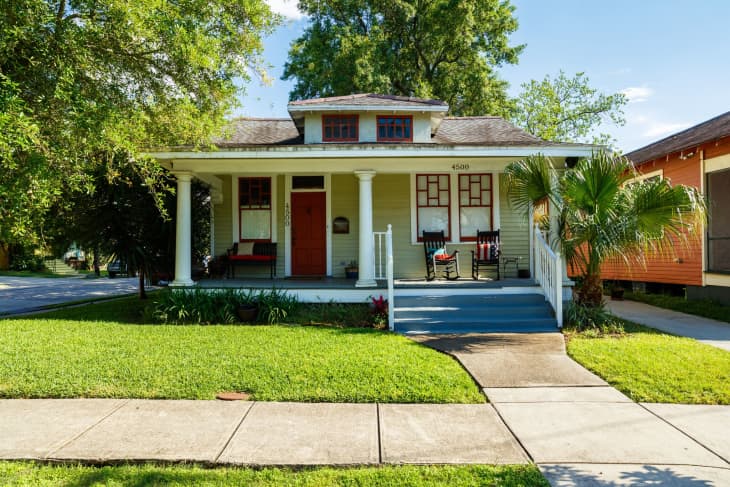How Do You Define a Bungalow?

If you’ve ever lived in or near Chicago, you’ve likely heard the term “Chicago Bungalow.” The house style is abundant around the city, skirting the edge of it in a stretch called the Bungalow Belt. The city and the home type go hand-in-hand—Chicago has about 80,000 of them—though that’s not to say bungalows don’t exist elsewhere. The single-family homes are popular around the country for their versatile and efficient design.
What exactly is a bungalow?
No matter what city they’re in, bungalows share a few defining characteristics. They’re always one and a half stories with a full basement. They’re generally all 20th-century constructions, typically with front porches. In Chicago specifically, though still prevalent in other bungalows, the entry door isn’t on the front of the house—instead, it’s knocked to the corner or on the side of the house, with a bank of windows in front instead. The roof is gently pitched, and allows an opportunity to add a second story or dormer it out to make more space upstairs.
Early bungalows usually have a finished attic or single bedroom on the top floor and a single bathroom on the ground level with the other bedrooms. More modern ones will have a bedroom or two and one bathroom up top, with two or three other bedrooms downstairs with a bathroom, and possibly a finished basement with yet another bedroom and half-bath. Other typical features include a fireplace, art glass or stained glass accompanying standard windows, and a detached garage.
Why are bungalows so popular?
Bungalows became popular at the start of the 20th century during the housing boom, says Tia Greer, a real estate agent with Dreamtown in Chicago. The homes were affordable for the masses, particularly for people who wanted to get out of the city and into a single-family home, but still wanted that city-life feel. And we’ve now come full circle, Greer says. “In the current market and the state of the economy, [bungalows] are serving the same purpose now as they did then,” she says. Cities are becoming too expensive, so people are migrating to the outskirts.
“It’s the happy medium for the clients who don’t want to leave the city but they’re not ready for the true suburban life,” says Tim Mullet, Greer’s agent partner at Dreamtown. “You can have your house, you can have your space, you can have your neighborhood feel, you can have your yard, and you can have a garage. It offers so much to a homebuyer.”
How are bungalows different from cottages?
Depending on who you ask, a bungalow is a type of cottage, or vice versa. But there are some important differences in the two home styles. Cottages have a higher-pitched roof than a bungalow, and tend to be more rural while bungalows are closer to denser areas. Front porches are more common for bungalows than cottages. Cottages are smaller as well, generally with only two rooms on each floor (if they have more than one floor at all). And bungalows offer both more versatility in room design—efficiency is a hallmark of bungalow styles—and more staying power than other homes.
“The neighborhoods that have bungalows, the streets are lined with them,” Mullet says. “They were built to last 100 years ago. People don’t tear these down. I think they’ll be around for another 100 years.”